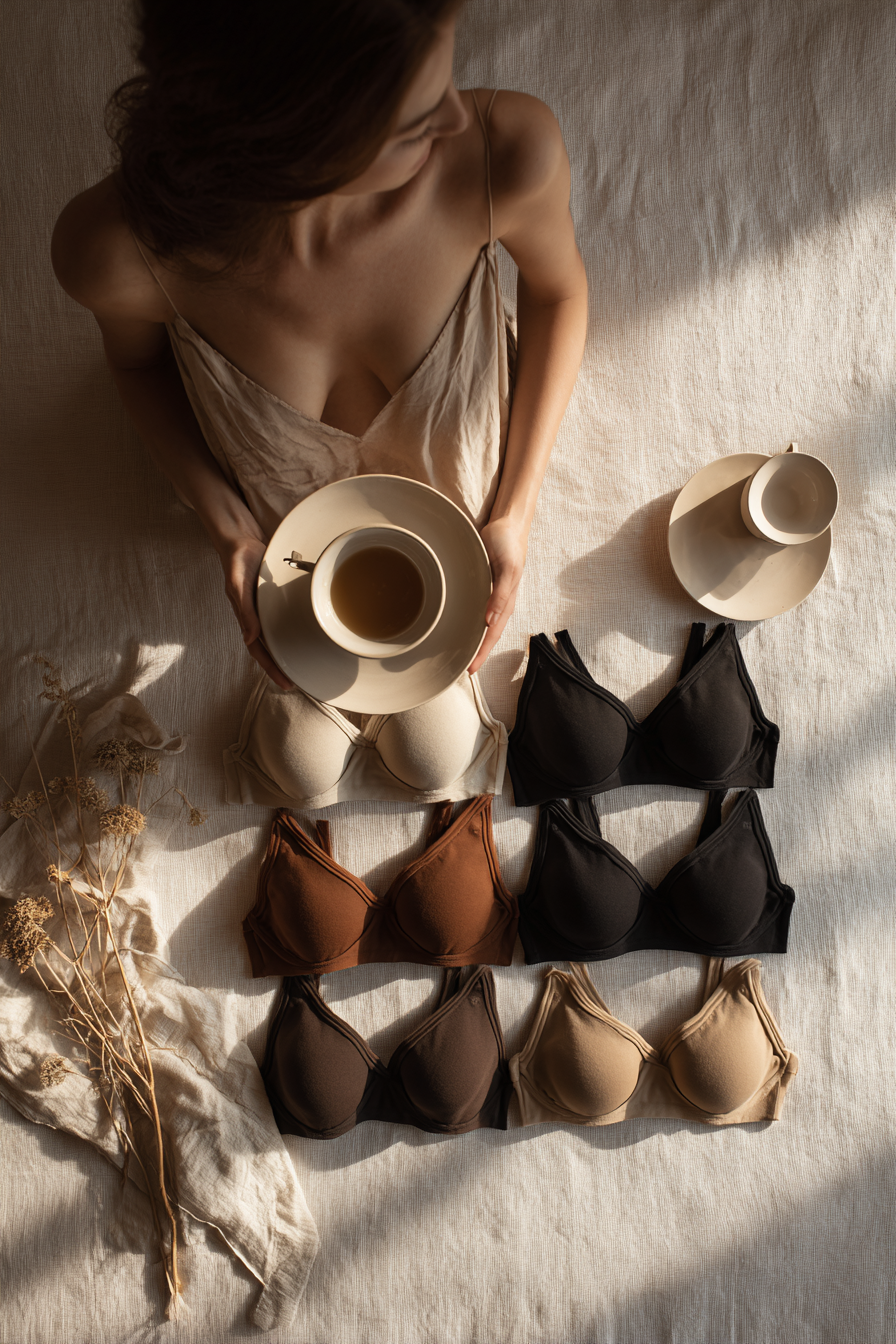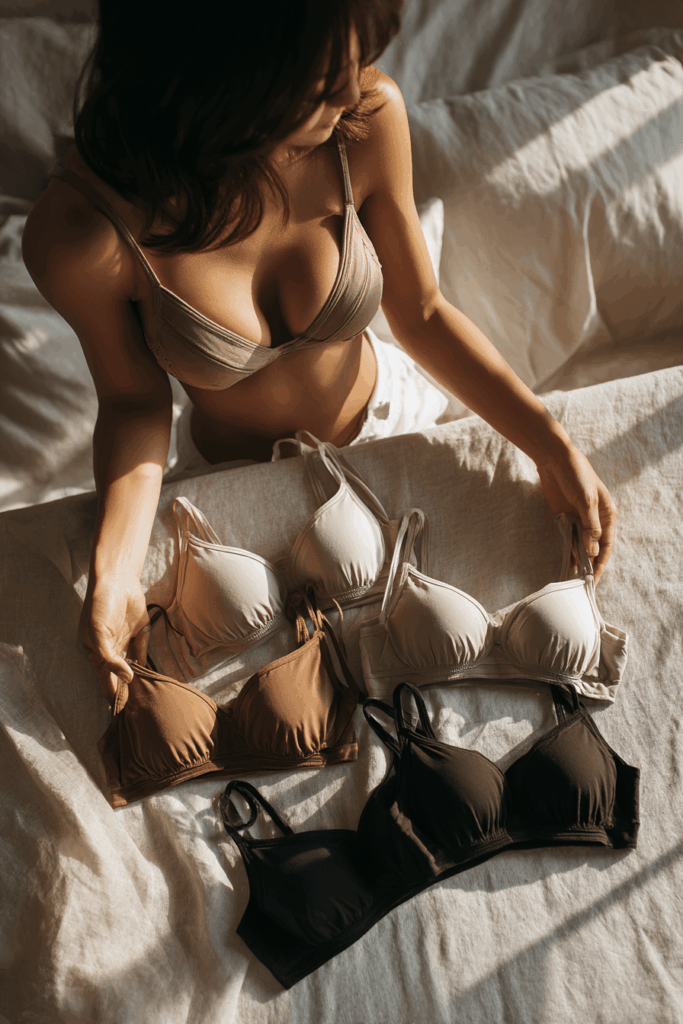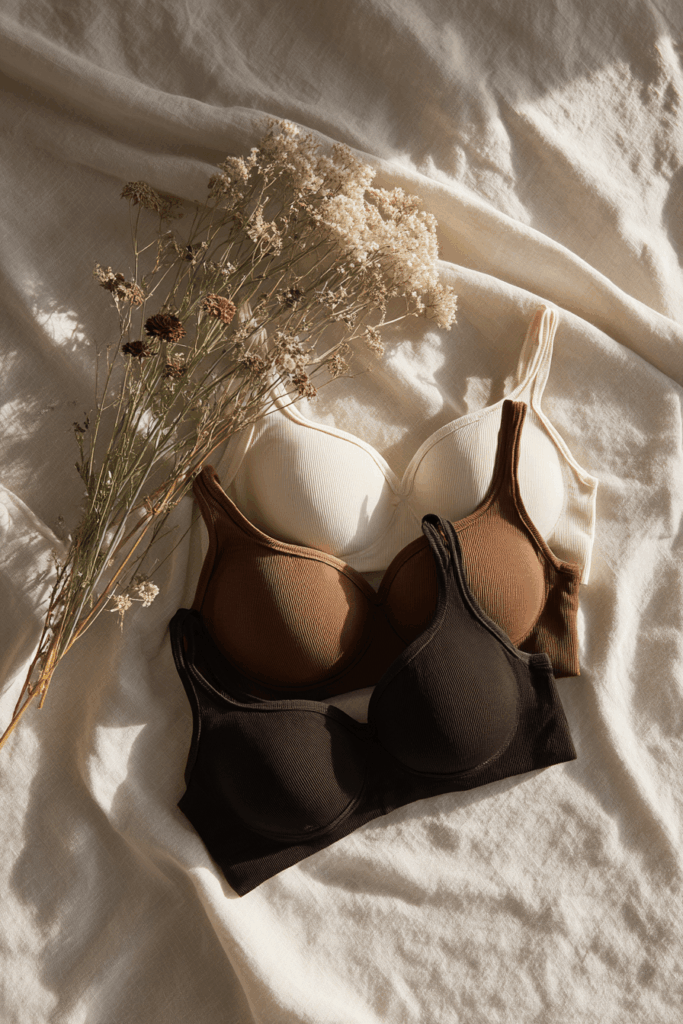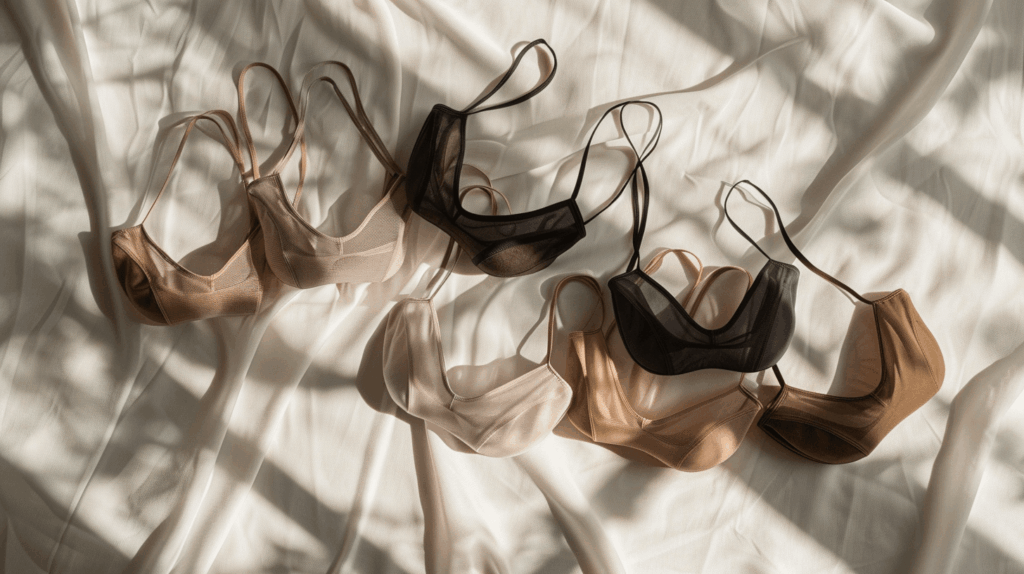
Waking up with itchy skin, discovering red marks under your bust, or battling unexpected breakouts on your chest can be both annoying and discouraging. For countless women, the culprit is hiding in plain sight: their bras. Lingerie is the most intimate clothing we wear, yet so many of us never think twice about what goes into it—until our bodies start sending signals. That’s why “hypoallergenic bras” have surged in popularity, promising a gentler, kinder option for sensitive skin. But what does “hypoallergenic” really mean in lingerie, and how can you know if a bra is truly skin-friendly?
Whether you’re struggling with allergies, eczema, or simply want to avoid irritation, understanding the science, marketing, and best practices behind hypoallergenic bras can help you make smarter, healthier choices every day.
What Does “Hypoallergenic” Really Mean?
The word “hypoallergenic” pops up everywhere these days: skincare, bedding, pet food, and yes, bras. But what is it actually telling you? Surprisingly, in most countries—including the U.S.—there’s no legal or universally accepted standard for what qualifies as “hypoallergenic” in textiles or personal care products. The term was first coined in the 1950s by the cosmetics industry and loosely means “less likely to cause an allergic reaction.”
For lingerie and clothing, this lack of regulation means brands can use “hypoallergenic” on a label without third-party testing or a clear definition. As a shopper, it’s wise to see “hypoallergenic” as a good starting point, but not a guarantee.
So, what should “hypoallergenic” mean in bras?
At its best, it refers to bras made with skin-friendly fabrics, minimal chemicals or dyes, gentle construction, and features that avoid the common triggers of irritation and allergy. A hypoallergenic bra should prioritize comfort, breathability, and purity—keeping you safe from both obvious and hidden irritants.
Common Causes of Bra-Related Skin Reactions
Understanding why bras trigger skin reactions helps you know what to avoid. Some reactions are true allergies (where your immune system responds to a specific trigger), while others are sensitivities (irritation without an immune response). Both can make wearing a bra uncomfortable—or even unbearable.
Major culprits in bras include:
Synthetic fabrics: Polyester, nylon, and spandex are everywhere in conventional bras. While they offer stretch and shape, these materials are more likely to trap sweat, irritate skin, and can carry residues from chemical processing. For some people, just a few hours in synthetic fabrics can cause redness, itchiness, or bumps.
Latex and elastic: Latex is a common allergen, and while less common in bras than in the past, some bands or elastic trims still use it. Elastic made from synthetic rubber can also cause sensitivity for those with very reactive skin.
Dyes and finishes: Brightly colored bras, or those claiming “anti-microbial” or “wrinkle-resistant” features, are often treated with chemicals. Azo dyes, formaldehyde, and other finishes are frequent triggers for dermatitis and allergic reactions.
Nickel in hardware: Many underwires, clasps, and adjusters use nickel or nickel alloys. Nickel is one of the top causes of contact dermatitis worldwide. Even if it’s plated or coated, the finish can wear off, leading to a rash or dark marks under the bust or on the back.
Foam and padding: The soft foam in many bras is made from polyurethane and may contain flame retardants or other additives. Foam can trap heat and moisture, leading to breakouts or fungal rashes—especially if you’re sensitive.
Seams, tags, and thread: Sometimes, it’s not the main fabric, but a scratchy tag, rough seam, or coarse thread that causes trouble. For people with eczema or psoriasis, these small details can mean the difference between comfort and agony.
Fragrance and fabric softeners: Some bras are scented or treated with microencapsulated “freshness” chemicals. Washing bras in strong detergent or using scented fabric softener can leave residues that irritate skin.
Underlying skin conditions: If you have eczema, psoriasis, atopic dermatitis, or extremely dry skin, you’re more likely to react to even small amounts of irritants in your bra. Hormonal changes (like those during pregnancy, menstruation, or menopause) can also make skin more reactive.

What Materials Make a Bra Truly Skin-Friendly?
For anyone seeking a hypoallergenic bra, the first and most important thing to check is the main fabric. Not all natural fibers are created equal, and even synthetic fibers can sometimes be tolerable if they’re high quality and certified safe. Here’s a look at the best options for sensitive skin:
Organic cotton:
The gold standard for sensitive skin. Organic cotton is grown without pesticides or harsh chemicals and processed with fewer irritants than conventional cotton. It’s soft, naturally breathable, absorbs sweat, and rarely causes allergic reactions. Look for GOTS (Global Organic Textile Standard) certification to ensure it’s truly organic from seed to stitch.
TENCEL™ Lyocell and Modal:
These plant-based fibers are derived from wood pulp (usually eucalyptus or beech). TENCEL™ is renowned for its silk-like softness, breathability, and moisture management. Its smooth fibers are less likely to chafe, and it resists bacteria growth naturally—a bonus for anyone prone to “bra acne.” Always look for OEKO-TEX® certification, as some brands add finishes that can irritate.
Bamboo viscose (processed responsibly):
Bamboo is soft, hypoallergenic, and naturally antibacterial. However, processing methods vary. Closed-loop, low-impact processing is best—look for certifications or reach out to brands for clarity.
Silk:
Pure silk is hypoallergenic and gentle on the skin, though less practical for everyday wear. Silk bras are often delicate, so they may not offer much support, but for special occasions or layering, silk is an ultra-gentle option.
Hemp and linen:
These are rarer in bras but are among the cleanest natural fibers. They’re antimicrobial, breathable, and rarely cause irritation.
What to avoid: Polyester, nylon, and regular spandex in high percentages; bras without clear fiber labeling; foam padding without a fabric barrier; heavily dyed or scented bras.
Why certifications matter:
Certifications like OEKO-TEX® Standard 100 and GOTS ensure the finished product has been tested for harmful substances and produced with minimal chemical inputs. When shopping for bras for sensitive skin, these labels offer peace of mind.
Bra Features & Construction Details That Matter
The fabric is only the beginning. The way a bra is constructed—down to the last stitch—can make a major difference for sensitive skin.
Seam placement: Look for bras labeled “seamless” or with flat, minimal seams. Some wireless bras use a single piece of fabric and have bonded (not stitched) edges, reducing chafing. For those with eczema or psoriasis, fewer seams usually mean fewer problems.
Tag type: Printed tags or tear-away tags are ideal. Even the softest cotton can be ruined by a scratchy, synthetic tag at the back.
Hardware: Nickel-free or plastic hardware is safest. Metal that’s fully coated or covered with fabric is less likely to cause a rash. If you’re extremely sensitive, choose pullover bras with no hardware at all.
Padding: Double-layered fabric or removable inserts are gentler than glued-in foam. If you need extra coverage, choose bras where the padding sits inside a natural-fiber pocket.
Elastic and bands: Natural rubber or covered elastic is less irritating than exposed, synthetic elastic. Wide bands distribute pressure and reduce red marks.
Wireless vs. underwire: For most with sensitive skin, wireless is best. Underwires can dig into skin and trap sweat, especially if the coating wears off.
Thread and stitching: Soft, fine thread and careful construction make a difference. Some hypoallergenic bras use organic cotton or TENCEL™ thread for all seams.

How to Shop for Hypoallergenic Bras: What to Look For
Walking into a store or browsing online, you’ll see plenty of claims but not always enough substance. Here’s a practical guide for shopping with sensitive skin in mind:
Check the label:
- The closer the bra is to 100% organic cotton, TENCEL™, or bamboo, the better.
- Avoid bras that are primarily polyester or nylon unless they’re OEKO-TEX® certified.
Look for certifications:
- OEKO-TEX® Standard 100 ensures the fabric and final product have been tested for harmful chemicals.
- GOTS is your sign of real organic cotton.
- Bluesign® or Fair Trade add further assurance of ethical, clean manufacturing.
Watch for red flags:
- Strong chemical smell (even after washing)
- No clear fabric breakdown
- Very bright or neon dyes
- Synthetic lace or foam with no information about what it’s made from
- Lots of decorative hardware or exposed elastic
Ask questions:
- Reach out to customer service if fiber content, finishes, or hardware aren’t clearly listed.
- If a brand doesn’t respond or seems evasive, move on.
Washing and care tips:
- Always wash new bras before wearing.
- Use fragrance-free, hypoallergenic detergent.
- Avoid fabric softeners, which can coat fibers and cause reactions.
- Air dry to reduce the risk of elastic breakdown and residue build-up.
Keep it simple:
- For very sensitive skin, start with undyed, natural-fiber bras.
- Consider rotating bras, so you’re not exposing your skin to one style or finish for days in a row.
Who Should Prioritize Hypoallergenic Bras?
While anyone can benefit from skin-friendly lingerie, certain groups have more reason to prioritize hypoallergenic bras:
- People with known allergies to latex, nickel, or synthetic fibers
- Anyone with eczema, psoriasis, atopic dermatitis, or chronic hives
- Women experiencing skin changes due to pregnancy, postpartum, or menopause
- Those recovering from surgery or undergoing radiation (skin is extra delicate)
- Teens with developing, sensitive skin
- Anyone with a history of unexplained rashes or “mystery irritation” from clothing
A special note for people with autoimmune issues or compromised skin barriers: even small exposures can add up. Don’t feel “picky” or “fussy”—your comfort is valid.

FAQs
Are hypoallergenic bras only for people with allergies?
No—anyone who wants to avoid unnecessary irritation or just feel more comfortable can benefit from hypoallergenic bras. Even people with no known allergies sometimes develop sensitivities over time.
Is organic cotton always hypoallergenic?
Organic cotton is less likely to cause a reaction, but extremely sensitive individuals should still check for dyes, finishes, and thread content. Undyed or “natural” colored cotton is safest.
What about elastic—can I wear stretchy bras?
Most people can tolerate elastic if it’s well-covered and not made from latex. If you react, look for bras with more fabric-based stretch and less synthetic elastic.
Can you make a regular bra hypoallergenic with washing?
Washing helps remove some residues, but if the bra is made with irritating fibers, dyes, or hardware, washing alone won’t make it truly hypoallergenic.
Are wireless bras better for sensitive skin?
Often yes, as they have fewer metal parts, less hardware, and simpler construction. But the key is always the combination of fabric and construction.
Final Thoughts
If you’ve ever suffered through an itchy, uncomfortable day just because of your bra, know this: it’s not something you have to accept. The right bra can change how you feel in your own skin, from morning to night. Shopping for a hypoallergenic bra means paying attention to details that matter—fiber content, construction, finishes, and care.
Your body is unique, and what works for one person may not work for another. Trust your skin’s feedback. Don’t settle for “good enough.” In a world full of options, you deserve comfort, safety, and confidence—starting with the first thing you put on every day.


